How To Make Foundation Look Like Skin
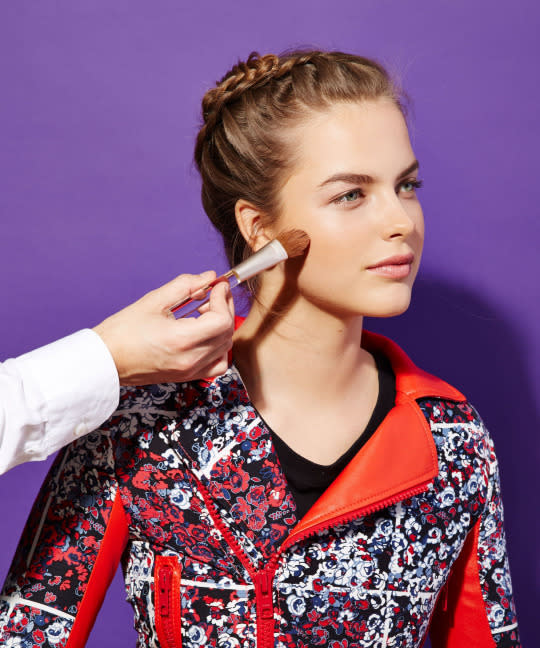
Luminous, dewy, bronzy, matte, semi-matte — as much as we love those adjectives, we really just want our foundation to make our skin look like, well, skin (minus the redness, acne scars, fine lines, and sun spots, natch). And while foundation can sometimes do a really good job of this, other times, not so much. Pigments settle into fine lines. Powders cake over blemishes. Textures clash. Shades don’t match. That foundation that you applied to make your skin look better, actually ends up making it look a lot worse.
No longer.
We tapped top makeup pros for their tips on applying the most natural-looking foundation possible. Read ahead for a no-makeup makeup masterclass — and never curse out your pigments again.
Related: What Happens When You Bleach Your Hair

Prep, Prep, & Then Prep Some More
You know how you typically slap on some moisturizer, maybe a primer, and get straight to work with the tinted stuff? Yeah, makeup artists never do that. “Backstage, skin can be a 20-30 minute process then the makeup is two minutes,” says Tim Quinn, makeup artist and national director of creative artistry for Armani Beauty.
Related: The Best Ways To Get Rid of Acne Scars
Most artists start with a soothing toner or mask (makeup artist Molly Stern loves Jurlique’s Rosewater Mist), then they massage in oils, serums, face creams, and eye creams in small, circular motions — waiting a few minutes between each step to allow them to settle. “If you don’t have proper hydration in the skin and you go to put on foundation, that’s when your skin freaks out,” says Quinn.
Dehydrated skin will suck up any moisture in the product and end up making it looking fake and obvious, Stern adds. If you have oily skin, continue with your regular routine but don’t skimp on that massage, which boosts circulation and makes the skin look brighter and better.
Related: This Is What Female-Directed Porn Looks Like
Jurlique Rosewater Balancing Mist, $35, available at Jurlique.
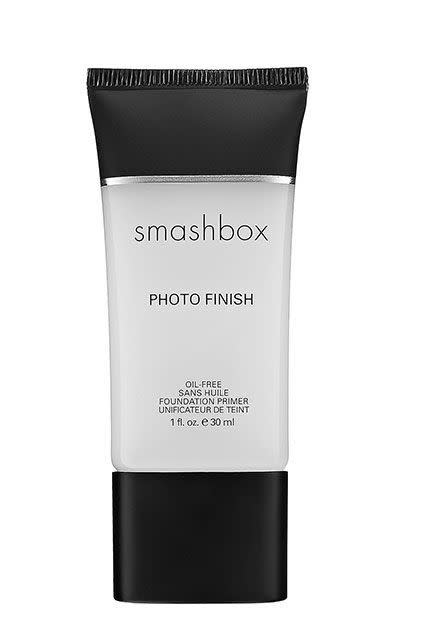
Rethink Your Primer
Just because it’s called primer doesn’t mean you should smear it all over your face. Makeup artist Daniel Chinchilla (who works with Ariana Grande) recommends cocktailing formulas — smooth on an oil-controlling primer in the T-zone and a silicone-based one for the rest of the face. (He loves using Smashbox Photo Finish Primer and CoverFx Mattifying Primer.) “Most people who have oily skin really have some form of combination skin,” says Chinchilla. “And if you put a matte primer over a dry area, it will take away the moisture and make it look cakey.”
Smashbox Photo Finish Foundation Primer, $36.99, available at Ulta Beauty.

Conceal Before Foundation
If you start slapping on foundation without concealing blemishes or undereye circles first, you’re going to overcompensate and end up using way too much product — and it will show. Instead, take care of them with a lightweight concealer first. Then, assess how much foundation you need from there.
Urban Decay Naked Skin Weightless Complete Coverage Concealer, $28, available at Urban Decay.
Related: What Going Paleo Did To My Body
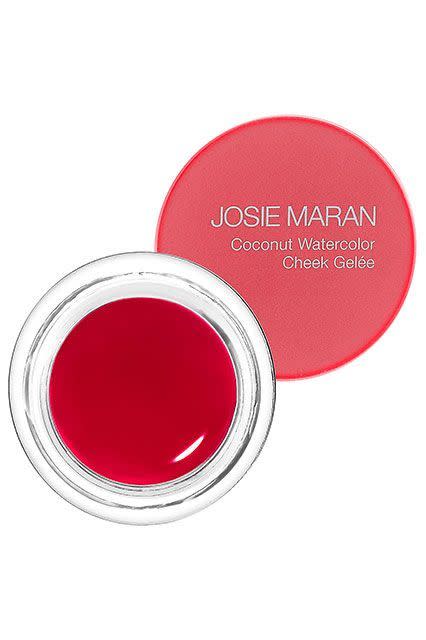
Blush First, Too
It sounds crazy, but applying blush before foundation will give your skin a natural-looking flush (like it’s actually coming from within your skin and not just sitting on top of your foundation). Makeup artists like Quinn and Dick Page use this trick all the time backstage at fashion shows. Just be sure to only use cream formulas — layering a powder blush under a liquid foundation is a recipe for disaster, warns Quinn.
Josie Maran Coconut Water Cheek Gelee, $22, available at Sephora.

Go Drop By Drop
The majority of women use way too much foundation, says Quinn. If you can, buy a foundation with a dropper rather than a pump — as one pump typically over-dispenses product (and you’ll feel guilty wasting it). Blend a few small drops from the center of the face outward with a damp BeautyBlender or a damp (yes, damp) foundation brush. “That keeps it from soaking up the product and makes it look more natural, not like you tried to cover something,” says Quinn. And resist the urge to lay down a full foundation. Just apply it in the areas you need it, says Quinn. “It’s meant to perfect, not to mask.”
Beautyblender The Original, $20, available at Sephora.
Related: Glow International With These Asian Beauty Products
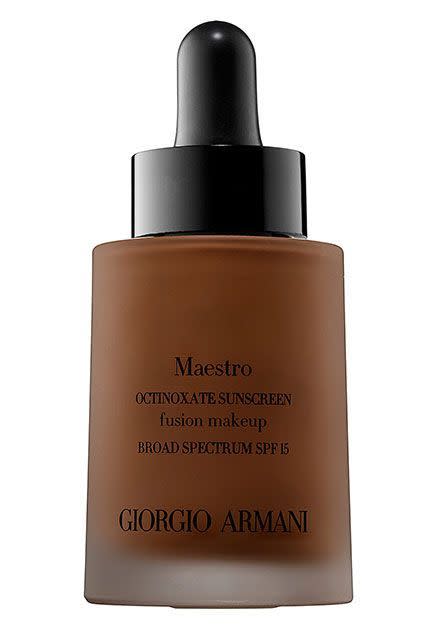
Choose Wisely
When it comes to choosing a formula, most artists agreed that liquids tend to look the most natural. Choose one that is medium to light-coverage and buildable (rather than a full-coverage one which has a tendency to look thick). Avoid anything that’s overly luminous or overly matte. “Everyone is obsessed with matte but it makes the skin look really dry,” says Chinchilla.
Giorgio Armani Maestro Fusion Makeup Octinoxate Sunscreen SPF 15, $64, available at Sephora.

Take It Down
If you overdo it (it happens!), try this tip from Quinn: “I lightly dip a big powder brush in a plain moisturizer and sweep it over the skin — the same way you would apply powder,” he says. “That takes the foundation down a bit and adds a subtle illuminating effect.”
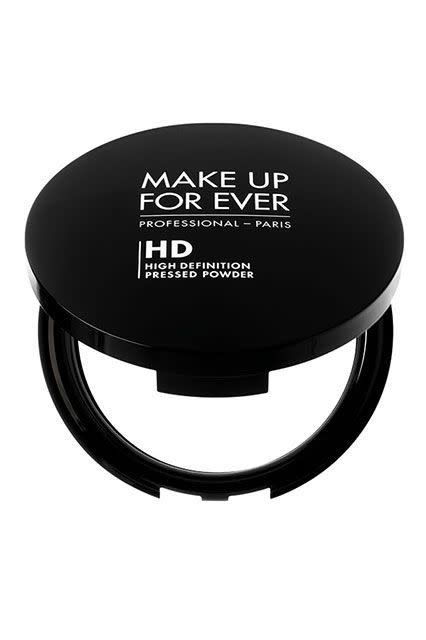
Set Your Work
Now that you’re finished, set the areas that are prone to slide (like your T-zone) with a light dusting of translucent powder. Stern recommends using a pressed one, as you’re more likely to over-apply messy loose formulas. And if you’re terrified of powders, remember this: “The less foundation you have on, the less obvious the powder will look,” says Stern. Funny how that works, isn’t it?
Make Up For Ever HD Pressed Powder, $36, available at Make Up For Ever.
By: Cat Quinn
